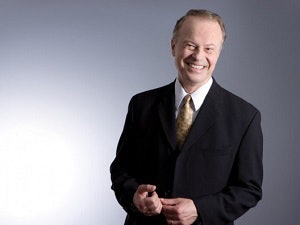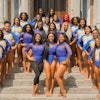Baseball is a game played at a slow pace and is deliberate when it comes to changing the way it is played. The same can be said for Major League Baseball (MLB) and its racial and gender hiring practices.
The Institute for Diversity and Ethics in Sport (TIDES) released its 2019 MLB Racial and Gender Report Card Monday, and there was little change from a year ago. The report shows a slight increase in racial hiring, a slight decrease in gender hiring and a combined grade that is identical to 2018. MLB earned an A- for racial hiring with 89 percentage points, up from 88 percentage points last year, and a C for gender hiring with 70 percentage points, down from 71 a year ago. The overall grade of B- with 79 percentage points is the same as 2018.
 Pittsburgh Pirates athletes (Photo by Justin K. Aller/Getty Images)
Pittsburgh Pirates athletes (Photo by Justin K. Aller/Getty Images)“The numbers are very much similar to last year,’’ said Dr. Richard Lapchick, the primary author of the study and director of TIDES at the University of Central Florida. “There was a slight increase overall in racial hiring and a decrease in gender hiring but basically everything stayed the same, with a little bit of increase in terms of managers of color, which is good. General Managers is still low. Obviously African-American players is still low, those are kind of disappointing statistics.
“I’m always expecting things to get better,” he added. “They don’t always follow my expectations. Moving percentages when there are so many people involved is hard. You can have a couple of key hires and it really doesn’t change the percentage very much. We really don’t expect big swings year to year. But we do expect to see a regular improvement.”
Highlights of the report:
- MLB has continued to increase diversity among players with 41 percent being of color. However, only 8.4 percent of players on 2018 Opening Day rosters were African-American. In 1991, 18 percent of all players were African-American.
- In the 2018 MLB Draft, 13 of the top 78 players picked (16.7 percent) were African-American. Over the last years (2012-2018) 44 of the 234 players selected (19 percent) identified as African-American/Black.
“The fact that it’s an increase is significant because it had been going down,’’ Lapchick said. “But it’s not a large increase. We need to see the numbers in the teens fairly soon to make a real statement.’’
Lapchick says the number of African-American players being drafted and the number on MLB rosters will increase if more youngsters in communities are exposed to baseball and become more interested in playing the game.
 Dr. Richard Lapchick
Dr. Richard Lapchick“RBI (Reviving Baseball in Inner Cities) is a significant program,’’ he said. “I think it increases the interest in the cities where it’s active. RBI has been around since the early 1990s and still we have this very small number of African-American players playing. Baseball academics are also important. When young people look at if they want to be an athlete, they look at the paucity of African-American stars in baseball and then they see significant numbers in the NFL and the NBA and they’re being lionized in those two leagues. If I am a 12-year-old African American boy trying to decide what I’m going to play it’s probably going to be the one where I’m gong to get the most opportunities and get the most notoriety. Young people have to see the opportunity for them to succeed in baseball as well.’’
As for the percentage of African players being drafted, he said, “That’s a good sign that the percentages are going up. The percentages going up in the draft will obviously impact who ends up on (MLB) rosters eventually. That’s a down the road process but it’s an encouraging sign.’’
- The 2019 MLB season began with five managers of color (16.7 percent), up from four in 2018. Four of the managers of color are Latino, matching the most at any given point in an MLB season. They are Alex Cora, Boston Red Sox (Latino); Dave Martinez, Washington Nationals (Latino); Charlie Montoya, Toronto Blue Jays (Latino); Rick Renteria, Chicago White Sox (Latino); Dave Roberts, Los Angles Dodger (2 or more races).
- At the end of the 2018 calendar year, four diverse individuals held the position of President of Baseball Operations with an MLB team, a title representing the top role of the Club’s baseball operations, or the position of General Manager. They were Michael Hill, President, Baseball Operations, Miami Marlins (African-American); Kenny Williams, Executive Vice President, Chicago White Sox, the Club’s top baseball operations executive (African-American); Farhan Zaidi, President, Baseball Operations, Chicago White Sox (Asian); Al Avila, Executive Vice President Baseball Operations/General Manger, Detroit Tigers (Latino).
- During the 2018 season, 29 of 30 MLB teams had women serving in a vice president role or above. The Boston Red Sox led the way with 10.
- As of December 2018, 19.4 percent were of color, a decrease from 20 percent the previous year.
- Women held 28.6 percent of team senior administration position, an increase from 27.7 percent in 2017.
- Commissioner Rob Manfred’s League Office received an A+ for racial hiring and a C for gender hiring, which were the same grades for 2018, People of colored comprised 33.3 percent and women 30.8 percent of the MLB office professional staff; there were 13 people of color and 15 women in positions of Vice President or higher.
Team levels lag behind league office levels but Dr. Lapchick said that is the case in all sports. His report is a measuring stick for Commissioners to gauge exactly where teams stand.
“We’ve been able to accomplish this,’’ Lapchick said. “You have to be able to accomplish this at the team level as well. You have to have a chief diversity officer or vice presidents for diversity, and more teams are doing that. We need all teams to do that. That’s happening in all sports, and I think its going to make a big difference where there is somebody actually on the team whose job it is to broaden the perspective by having a more diverse work force.’’
Lapchick said while MLB hasn’t made the strides in terms of diversity that he would like to see, he’s “not greatly disappointed” and he is optimistic that its hiring practices will continue on an upward arc.
“I think the person that they’ve hired, Renee Tirado, to lead their diversity efforts is a very dynamic woman,’’ he said. “I think she will have an impact at the league level as well as in their youth efforts to increase the number of African-American youth playing the game and keep diversifying the audience of baseball which is an older mostly White demographic at this point.’’



















